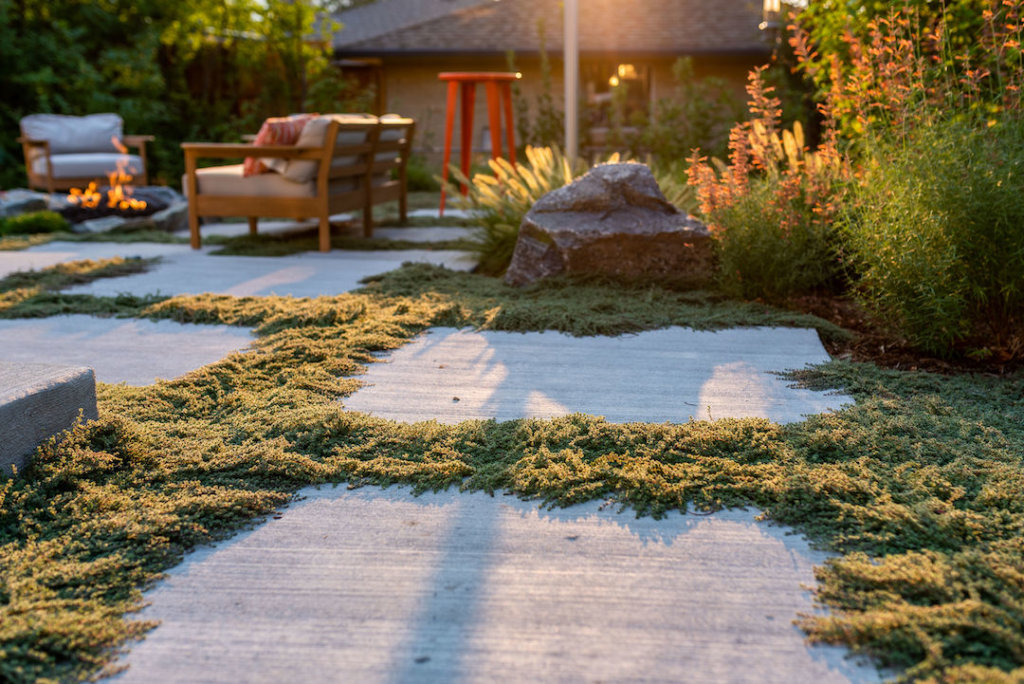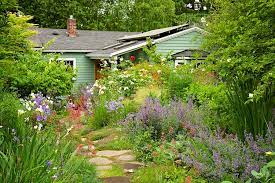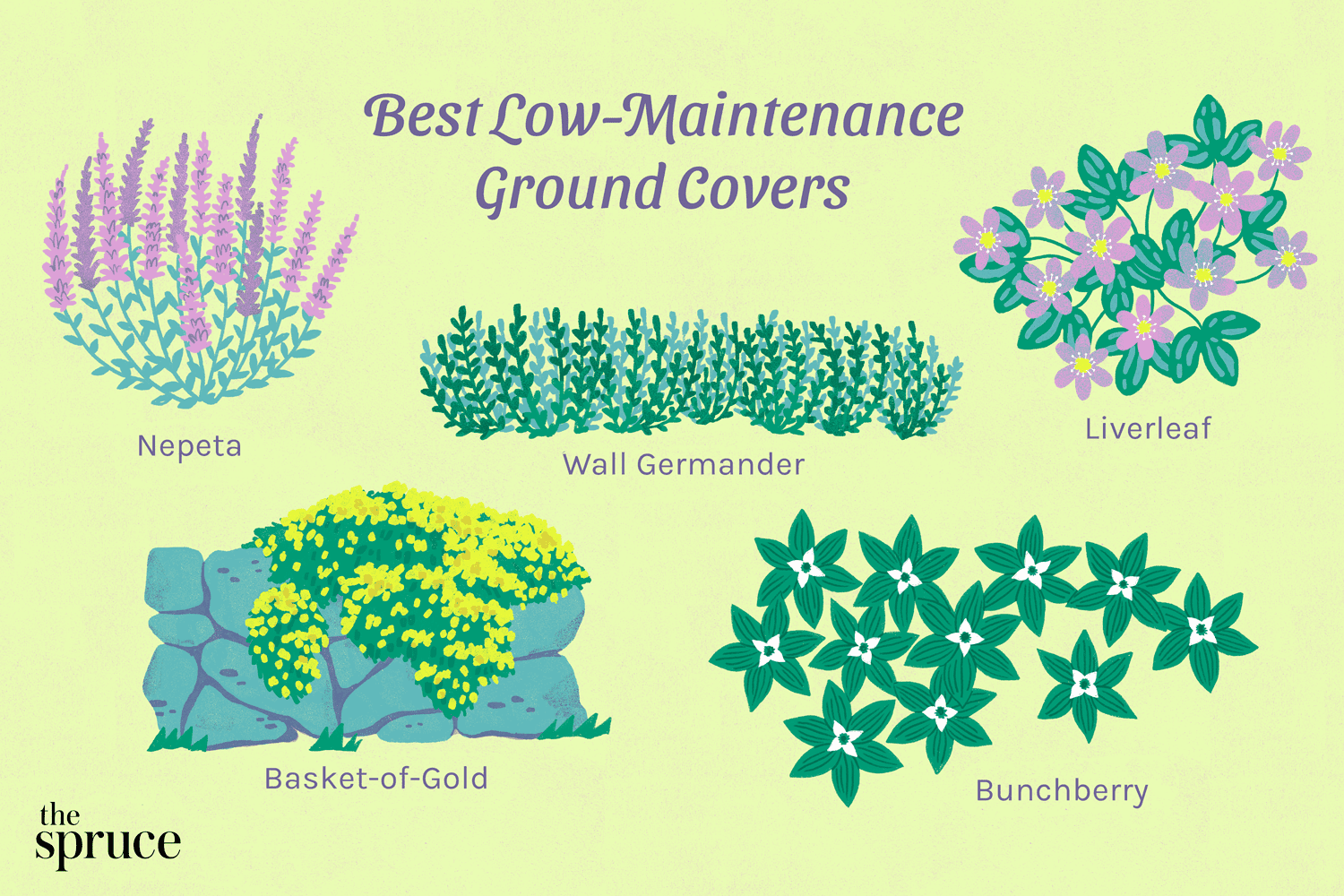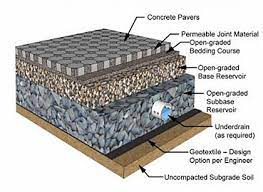
A lush green lawn is often seen as the epitome of a well-manicured yard, but it requires a significant amount of water, fertilizer, and pesticides to maintain. In addition, traditional lawns can contribute to soil erosion, chemical runoff, and air pollution. Fortunately, there are many lawn alternatives that can reduce your environmental impact while still providing a beautiful and functional outdoor space.
One popular sustainable lawn alternative is a meadow garden. These gardens are designed to mimic natural meadows and typically include a mix of grasses, wildflowers, and other native plants. Meadows require less water and maintenance than traditional lawns and can provide a habitat for pollinators and other wildlife. Plus, their colorful blooms can create a stunning visual display.
Another option is to replace your lawn with a vegetable garden. Not only do you get fresh, homegrown produce, but you also reduce the need for pesticides and fertilizers. Vegetable gardens also help to reduce your carbon footprint by reducing the amount of energy needed to transport produce to your home. Plus, they can be a fun and educational project for the whole family.
If you want a low-maintenance lawn, consider replacing your grass with groundcovers. Groundcovers are low-growing plants that can spread and cover large areas of land. They require less water than traditional lawns, and many are drought-tolerant. Some popular groundcovers include creeping thyme, clover, and sedum. These plants are often used in rock gardens, along paths, or in other areas where grass may not grow well.
For a more modern look, consider installing permeable paving instead of a traditional lawn. Permeable paving allows water to soak into the ground, reducing runoff and erosion. It also helps to filter pollutants and contaminants from the water. This type of paving can be made from a variety of materials, including permeable concrete, gravel, and permeable pavers.
What are some benefits of lawn alternatives?
Sustainable lawn alternatives can help reduce your environmental impact by requiring less water, fertilizer, and pesticides. They can also provide habitat for wildlife, prevent soil erosion, and reduce air pollution.
Some benefits of lawn alternatives include:
- Reduced water usage and water bills
- Reduced use of fertilizers and pesticides, which can be harmful to the environment and human health
- Reduced mowing, which saves time and energy
- Improved biodiversity and habitat for wildlife
- Increased aesthetic appeal, with a variety of textures and colors in the landscape
- Increased property value and potential for cost savings on lawn maintenance over time.
What are some popular lawn alternatives?
Some popular lawn alternatives include meadow gardens, vegetable gardens, groundcovers, permeable paving, and eco-friendly grasses.

Native plants: Using plants that are native to your area can be a great way to create a sustainable lawn. Native plants require less maintenance, and less water, and support the local ecosystem. Native plants are excellent lawn alternatives because they are climate-adapted and provide important habitats for wildlife. Wildflowers can brighten and beautify a meadow garden, while groundcovers like clover and creeping thyme can create a lush.
Ground covers: Ground covers such as clover, creeping thyme, or sedum can provide an attractive alternative to a traditional grass lawn. They require less maintenance, and less water, and can provide a habitat for pollinators.
Permeable paving: Instead of traditional hardscaping, permeable paving materials such as permeable concrete, pavers, or gravel can be used. These materials allow water to soak into the ground, reducing runoff and erosion.
Artificial turf: While not a natural solution, artificial turf can be a sustainable option for areas with low water availability or where the grass is difficult to grow. It requires no water, no fertilizer, and little maintenance.
Edible landscaping: Planting edible plants such as vegetables, herbs, or fruit trees can be a sustainable and functional alternative to a traditional lawn. It provides fresh produce and requires less water and maintenance than a grass lawn.
A traditional grass lawn is a common type of lawn in many parts of the world that are characterized by a uniform, lush appearance. Grass lawns typically require frequent mowing, watering, and fertilization to maintain their appearance. While grass lawns can be aesthetically pleasing, they are often environmentally costly due to their high water and chemical requirements.
Grass lawn alternatives offer a more sustainable and eco-friendly option for those looking to create a beautiful and functional outdoor space. Instead of relying on traditional turf grass, grass lawn alternatives use a variety of plants and groundcovers to create a lush and natural-looking lawn.
A meadow garden is a type of garden created to look like a natural meadow or grassland. It is distinguished by the use of grasses and wildflowers and is intended to provide wildlife habitat while also being environmentally friendly.
A meadow garden can be designed in a variety of ways, but it typically consists of planting a mix and wildflowers. The garden can be allowed to grow naturally or mowed once or twice a year to prevent it from becoming overgrown. The goal is to create a habitat for a wide range of birds, insects, and other wildlife.
Meadow gardens are frequently used as an alternative to traditional lawns, which require a lot of water and maintenance and offer little wildlife habitat. They can also be used in areas where the soil is poor or where other types of plants are difficult to grow.

What are some examples of groundcovers?
Some popular groundcovers include creeping thyme, clover, and sedum. These plants are low-growing and can spread to cover large areas of land. They require less water than traditional lawns and many are drought-tolerant.
There are many types of groundcovers, some of which are:
Clover: Clover is a fast-growing groundcover that fixes nitrogen in the soil, making it a great option for organic gardens.
Creeping Thyme: Creeping thyme is a low-growing herb that has small, fragrant leaves and produces small pink, purple, or white flowers in the summer.
Sedum: Sedums are succulent plants that come in a variety of colors and textures. They are easy to grow and require little water or maintenance.
Creeping Jenny: Creeping Jenny is a low-growing, spreading plant that has bright green, round leaves. It thrives in damp soil and can be used to cover areas around water features.
Vinca: Vinca is a fast-growing groundcover with glossy leaves and purple or white flowers that bloom in the spring.
Ajuga: Ajuga is a spreading plant with dark green leaves and blue, pink, or white flowers that bloom in the spring.
Sweet Woodruff: Sweet Woodruff is a low-growing plant that has delicate white flowers that bloom in the spring. It is often used as a ground cover in shady areas.
These are just a few examples of groundcovers, and there are many others to choose from depending on your needs and the growing conditions in your area.

What is Permeable Paving?
Permeable paving is a type of pavement or surface material that allows water to pass through and into the ground beneath it. Permeable paving, as opposed to traditional impermeable surfaces such as concrete or asphalt, allows water to percolate through it and into the soil, where it can be naturally filtered and absorbed.
Permeable paving materials include porous concrete, pavers, or asphalt, as well as the gravel or other types of natural stone. Water can pass through these materials via pores or gaps in the surface, or via an underlying layer of gravel or other aggregate material.
Permeable paving benefits the environment by reducing stormwater runoff and erosion, replenishing groundwater supplies, and improving water quality by reducing pollutants and sediment carried into streams and waterways. Permeable paving can also be attractive, with a variety of colors and textures to complement various landscaping styles and designs.

What are some benefits of native grasses?
Native grasses are adapted to your local climate and require less water and maintenance. They also provide habitat for native wildlife and can help to prevent soil erosion.
- Drought tolerance: Are adapted to the local climate and can withstand periods of drought and heat without the need for supplemental watering.
- Reduced water usage: Since they are tailored to the local environment, they use less water and save money.
- Low maintenance: Requiring less mowing, fertilizing, and pest control.
- Soil conservation: have deep root systems that aid in erosion prevention, soil health improvement, and water conservation.
- Habitat creation: It provides habitat for wildlife such as birds, butterflies, and bees, which are important pollinators and indicators of a healthy ecosystem.
- Biodiversity: Planting can help preserve the biodiversity of an area by providing a habitat for a wide variety of plant and animal species.
- Aesthetics: It can be an attractive and natural-looking alternative to traditional lawns, with a variety of colors and textures available to suit different landscaping styles and designs.
What are Grass alternatives?
Grass alternatives provide a sustainable and environmentally friendly alternative to traditional grass for creating a lawn that requires less water and maintenance. Drought-tolerant grasses such as fescue, zoysia, and Bermuda grass require less fertilizer, pesticides, and water than traditional turf grass.
Furthermore, groundcovers like clover and creeping thyme can be used to create a lush, low-maintenance lawn that requires less water and care. You can create a sustainable lawn that is both beautiful and environmentally friendly by using grass alternatives.
What is a traditional turf grass?
Traditional turf grass is a type of grass that is commonly used for lawns in North America and other parts of the world. Examples of traditional turf grasses include Kentucky bluegrass, Bermuda grass, and fescue. These grasses are often chosen for their fine texture and ability to create a uniform, lush lawn. However, traditional turf grasses typically require frequent watering, fertilization, and mowing to maintain their appearance, which can be environmentally costly and time-consuming.
What are some examples of eco-friendly grasses?
Some popular eco-friendly grasses include fescue, zoysia, and Bermuda grass. These grasses require less water and fertilizer than traditional grasses and are often drought-tolerant.
There are several eco-friendly types of grass that are suitable for use in landscaping and lawns, including:
Buffalo Grass: This is a drought-resistant native grass that requires less water than many other types of grass.
Blue Grama Grass: is water stress and warm-season grass that grows slowly. maintenance. It can grow in a variety of soils and is pest and disease resistant.
Fine Fescue: This is a family of cool-season grasses that require less fertilizer and water than other types of grass. They are also pest and disease resistant.
Zoysia Grass: This is a warm-season grass that grows well in a variety of soils and is waterlogging. It is also pest and disease resistant.
Bermuda Grass: is a recession, minimal warm-season grass. It can withstand high traffic and is resistant to pests and diseases.
St. Augustine Grass is a moderate, waterlogging warm-season grass. It grows well in a variety of soils and is resistant to pests and diseases.
Centipede Grass: is a minimal, slow-growing warm-season grass that is resistant to drought and disease.
How to choose a Sustainable Lawn Alternative
The right sustainable lawn alternative for you depends on your specific needs and preferences. Consider factors such as your climate, soil type, amount of sunlight, and desired level of maintenance. You may also want to consider the aesthetic appeal of different options.
When choosing a sustainable lawn alternative, there are a few factors to consider:
- Climate: Choose a lawn alternative that is adapted to the local climate and growing conditions. This will help ensure that the plants are able to thrive with minimal water and maintenance.
- Water requirements: Choose a lawn alternative that requires minimal water, as this will help reduce water usage and associated costs.
- Maintenance requirements: Choose a minimal lawn alternative to reduce the amount of mowing, fertilizing, and pest control required.
- Soil type: Choose a lawn alternative that is adapted to the local soil type, as this will help ensure that the plants are able to grow and thrive.
- Purpose: Consider the purpose of the lawn and how it will be used. For example, if the lawn will be used for outdoor activities such as sports, a durable ground cover or turf may be more suitable.
- Aesthetics: Choose a lawn alternative that is aesthetically pleasing and fits with the overall landscaping design. There are many different types of groundcovers available, with a variety of colors, textures, and growth habits to choose from.
- Availability: Choose a lawn alternative that is readily available in your area, as this will help ensure that you are able to find the plants you need and that they are well-suited to the local climate and growing conditions.
Will a lawn alternative increase the value of the property?
Many factors influence the value of a property, and the impact of a sustainable lawn alternative on property value will depend on a variety of factors such as location, local real estate market, and the specific lawn alternative being used. A well-maintained and appealing landscape can generally increase the value of a property, and a sustainable lawn alternative can be an appealing and eco-friendly option that appeals to environmentally conscious home buyers.
A low-maintenance, water-efficient lawn alternative may also appeal to home buyers looking for low-maintenance landscaping options. The impact of a sustainable lawn alternative on property value, on the other hand, will ultimately depend on a number of factors, and it is always a good idea to consult with a local real estate agent or appraiser to get an accurate assessment of the potential impact on property value.
How much does it cost to install a lawn alternative?
The cost of installing a sustainable lawn alternative can vary depending on several factors such as the size of the area to be covered, the type of lawn alternative being used, and the cost of labor and materials in your area.
For example, if you’re using a meadow garden, the cost may include soil preparation, planting, and maintenance. If you’re using permeable paving, the cost may include excavation, base material, and installation of the pavers or other permeable material. If you’re using groundcovers, the cost may include soil preparation, planting, and maintenance.
In general, the cost of installing a sustainable lawn alternative can range from a few hundred dollars for a small area of groundcovers, to several thousand dollars for a larger area of permeable paving or a meadow garden.
It’s always a good idea to consult with a professional landscaper or contractor to get an accurate estimate of the cost of installing a sustainable lawn alternative for your specific needs and location. They can provide an estimate based on the specific requirements of your project and the cost of materials and labor in your area.
Is it difficult to maintain lawn alternatives?
The majority of lawn alternatives require less maintenance than traditional lawns, but the amount of maintenance required will vary depending on the specific alternative you select. Meadow gardens and vegetable gardens, for example, may necessitate more upkeep than groundcovers or permeable paving.
It is intended to be limited, but the level of maintenance required will vary depending on the type of lawn alternative used and the specific conditions in your area. Here are some broad guidelines:
- Groundcovers: Once established, groundcovers such as clover, thyme, and sedum are very easy to maintain and require little to no mowing or watering.
- Native grasses: It requires little maintenance, such as occasional mowing, watering during dry periods, and weed removal as needed.
- Meadow gardens: While meadow gardens require some maintenance, they are generally designed to be extremely durable, with grasses and wildflowers only needing to be mowed once or twice a year to keep them from becoming too tall.
- Permeable paving: requires very little maintenance, but sweeping and power washing may be required on occasion to keep the surface clean and prevent clogging.
It is less difficult to care for than traditional lawns, which necessitate frequent mowing, watering, and fertilizing. You can help ensure that your lawn requires minimal maintenance and remains healthy and attractive year-round by selecting a sustainable lawn alternative that is well-suited to your climate and soil conditions.
A lawn alternative for backyard recreational activities
There are several factors to consider when selecting a lawn alternative for backyard recreational activities. Although they were designed to be low-maintenance, they may not be appropriate for all types of outdoor activities. Consider the following options:
An artificial turf is a popular option for backyard recreational activities, especially for those who want a low-maintenance and durable surface for sports and other activities. Artificial turf is designed to mimic the look and feel of real grass, but it requires no watering, mowing, or fertilizing, making it a low-maintenance alternative to traditional lawns. It is also durable and can withstand heavy foot traffic, making it ideal for backyard sports and other activities. However, artificial turf may not be the most eco-friendly option, as it is typically made from synthetic materials and can contribute to landfills when it is eventually replaced.
Clover is another option to consider for a lawn alternative that is well-suited to backyard recreational activities. Clover is a low-growing groundcover that requires little water and maintenance, making it a sustainable and eco-friendly option for those who want to reduce their water usage and lower their environmental impact. Clover is also soft and durable, making it ideal for backyard sports and other activities. Additionally, clover attracts beneficial insects and pollinators, making it a great option for those who want to support local wildlife.
Perennial peanut is a warm-season groundcover that is becoming popular as a low-maintenance lawn alternative for backyard activities. Perennial peanut is a legume that fixes nitrogen in the soil, reducing the need for fertilizer and improving soil health in the long run.
A wildflower mix is another option to consider. While this option may not be ideal for backyard sports and other high-impact activities, it can be a beautiful and eco-friendly option for those looking to create a natural-looking landscape that supports local wildlife. They adapt well to local growing conditions, require little water and maintenance once established, and can serve as a habitat for birds, butterflies, and other wildlife.
What is An eco-friendly Lawn?
An eco-friendly lawn is a type of lawn that is designed to be sustainable, low-maintenance, and environmentally friendly. Rather than relying on traditional turf grass that requires a lot of water, fertilizer, and pesticides, eco-friendly lawns use a variety of grass alternatives and native plants to create a lush, natural-looking landscape. Eco-friendly lawn alternatives include meadow gardens, vegetable gardens, groundcovers, and permeable paving, all of which require less water and maintenance than traditional lawns.
By incorporating eco-friendly lawn alternatives into your landscaping, you can reduce water usage, decrease the need for chemicals, and create a sustainable outdoor space that benefits both the environment and your wallet. With the right design and maintenance, an eco-friendly lawn can be just as beautiful and functional as a traditional lawn, but with added benefits for the planet.
What is a Shady Gardens?
It is a type of garden that is located in a shaded area, such as under trees or near tall buildings. Plants in a shady garden must be carefully chosen for their ability to grow and thrive in low-light conditions. Ferns, hostas, and other leafy plants are common, as are shade-tolerant flowers such as impatiens and astilbe. On hot summer days, it can provide a peaceful and tranquil space as well as a cool respite from the heat. A shady garden, with the right plants and design, can be just as beautiful and functional as a full-sun garden.
Beautiful deep emerald hues for Sustainable Lawn Alternatives
There are a variety of sustainable lawn alternatives that can offer a beautiful deep emerald green color similar to traditional turf grass. For example, some varieties of fescue grass, such as tall fescue and fine fescue, offer a deep green color and are drought-tolerant, requiring less water than traditional grass. Another option is clover, which is a nitrogen-fixing plant that can create a lush and green lawn without the need for synthetic fertilizers. Native grasses, such as buffalo grass and blue grama, can also offer a deep green color while requiring less water and maintenance than traditional turf grass. In addition to grasses, there are many groundcovers and plants that can offer a green and lush appearance to a lawn alternative, such as thyme, sedum, and ajuga. By incorporating these sustainable lawn alternatives into your landscaping, you can create a beautiful and low-maintenance outdoor space that benefits both the environment and your wallet.
Leave a Reply